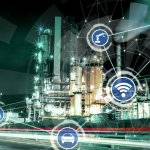
Predictive analytics brings great value to companies, especially to HR. Source: Shutterstock
Expert insights: The benefits of using predictive analytics in HR
WHEN we think of big data, we think of heaps of information about customers and prospects, or about the company’s finances.
However, there’s an area of the business that seldom comes to mind when we think of big data, but it’s an important segment, one where analytics maturity plays an important role. That function is Human Resources (HR).
Companies collect and create a tonne of data about their employees. Notes about their past, their history with the company, and their future prospects can all be “modeled” based on what a company knows about its employees.
So much so that the division qualifies as one of the best candidates for predictive analytics solutions.
In an exclusive interview with Tech Wire Asia, Rohit Manucha, Head Compensation & Benefits & HR Business Partner, Aujan Coca Cola Beverages Company discusses how it actually works behind the scenes:
Simply put, predictive analytics is high up on the data and analytics maturity curve as it helps companies see into the future.
“Predictive analytics factors in the history and facilitates decision making by forecasting the most probabilistic future based on a series of criterion, assumptions, and hypothesis,” explained Manucha.
The use of predictive analytics in HR enables an organization to forecast the impact of people policies on their own well-being and the performance of the organization but must not remain a mere dashboard – not facilitating any business decision.
In order to help visualize its uses, Manucha gives the following examples of how predictive analytics can be deployed in HR:
- The validity of the hiring tools & techniques and workforce planning
- Performance and leadership potential
- Retention analytics and attrition risks
- ROI on training/ development interventions
- Total rewards analytics
- Engagement and productivity analytics
Given the benefits, it’s obvious that several companies must already be experimenting with the technology.
“There are a number of leading organizations that are currently using a host of analytics frameworks to drive predictive people analysis that will drive customized people policies, systems, and processes within the organization,” revealed Manucha.
Manucha offered three examples: Google, HP, and the Aujan Coca Cola Beverage Company (ACCBC).
At Google and HP, predictive analytics is applied across the talent management roadmap. From acquisition, retention, and development, all the way through exit and re-hiring.
“Doing so allows the companies to hire the right person for the job, monitor career progression and introduce the right interventions/ timely stretch assignments which proactively prevents voluntary exits, thereby driving down hiring/ replacement costs and provides for higher productivity levels/ employee engagement,” explained Manucha.
At ACCBC, Manucha is working on a model that applies analytics to automate job evaluation and build organization structures, career progression paths, and a total rewards framework. He then plans to take it a step further to analyze free flow text and use machine learning to develop accurate role profiles linked to unique roles.
In Manucha’s eyes, using predictive analytics in HR provides everlasting tangible and intangible benefits for an organization. He’ll be speaking at the ConnecTechAsia Summit in Singapore later this month, explaining more about the topic and how it can benefit HR people.
Truth be told, it seems as though there are hardly are any HR processes which can’t benefit from analytics in some form.
However, the simple litmus test to know where predictive analytics can bring the highest return is whether or not clean data can be used to relate, build a model, then test & validate the model with a hypothesis.
So the next time you are unsure of whether you can use predictive analytics to solve a problem statement just ask yourself: Is there a specific outcome that needs to be tested for in the future and does the company have sufficient data to allow the establishment of interdependencies and/ or derive cause-effect hypothesis?
READ MORE
- Ethical AI: The renewed importance of safeguarding data and customer privacy in Generative AI applications
- How Japan balances AI-driven opportunities with cybersecurity needs
- Deploying SASE: Benchmarking your approach
- Insurance everywhere all at once: the digital transformation of the APAC insurance industry
- Google parent Alphabet eyes HubSpot: A potential acquisition shaping the future of CRM




